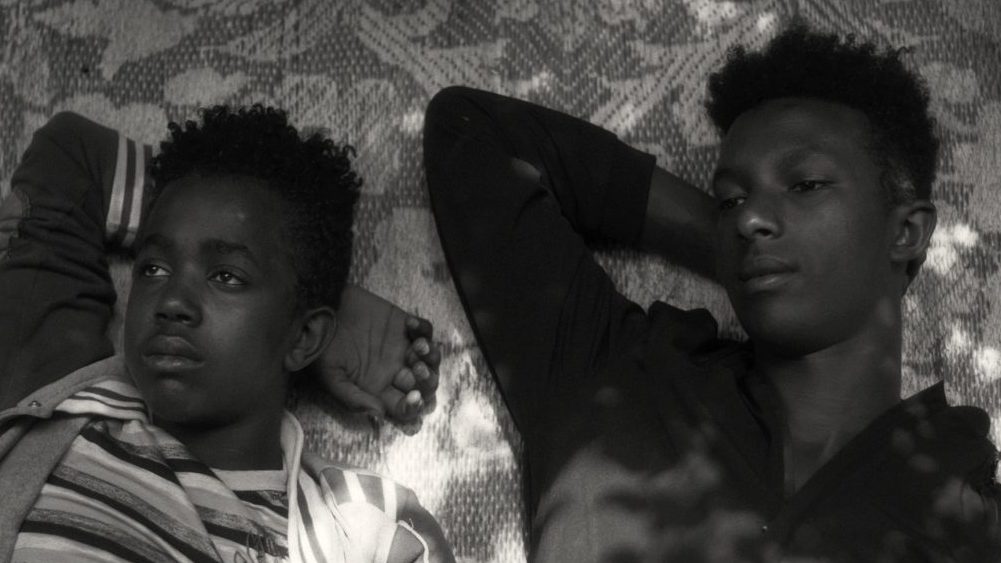
IndieWire turns 25 this year. To mark the occasion, we’re running a series of essays about the future of everything we cover.
Remember when documentaries were deeply honorable but commercially unviable? “Knock Down the House” shattered Sundance records in 2019 when Netflix bought it for $10 million; Apple and A24 broke that record the next year with the $12 million acquisition of “Boys State.” Apple paid a reported $25 million for “Billie Eilish: The World’s a Little Blurry,” while studios like Concordia, Participant, Radical, and XTR pump millions into the non-fiction genre.
Today, everyone loves documentaries. Streamers are hailed as giving the genre a new lease on life. However, the streaming business is not dedicated to speaking truth to power, as documentaries often do; streamers amass subscribers and create shareholder value.
So, what does that mean for the future of documentaries? If the risk-averse, franchise-dominated movie business is any example, we should expect more documentaries about famous people, or salacious subjects, or expansions of proven properties. Or, all of the above, like the critically reviled second season of “Tiger King.”
It’s also a future in which documentary filmmaking is normal for a generation shaped by creating social-media confessionals. Compared to the earliest digital natives, younger people who grew up in the age of Instagram have the luxury of taking these technologies for granted, giving them an intuitive relationship to filmmaking tools.
“The fact that we have a generation of visual natives who are used to telling stories — and their own stories — in that way, has just completely upped the ante of the field,” said Carrie Lozano, director of the Sundance Institute’s documentary program who previously taught at the UC Berkeley Graduate School of Journalism. “Their visual acuity is amazing. You don’t have to teach them to be cinematographers in quite the way we used to have to teach people to do that.”
It’s a long way from the first documentary boom. In 1994 and 1995, Fine Line Features acquired festival standouts “Hoop Dreams” and Sony Pictures Classics bought “Crumb” — rare exceptions in an indie marketplace driven by fictional narratives.
Three decades on, documentaries dominate Sundance acquisitions driven by audience appetite for real-life stories — but that would not happen without streaming. In 2019, non-fiction films made up less than one percent of box-office grosses. By comparison, documentaries and docuseries made up 16 percent of Netflix’s 2021 originals slate. On HBO Max it was 18 percent and around a quarter for Amazon Prime Video and Disney+, according to analytics firm Diesel Labs.
Streamers use non-fiction and unscripted titles to fight for relevancy and engagement through quality (HBO’s Emmy-nominated “Allen v. Farrow”), salacious virality (pandemic-binge watching of “Love Island” on Hulu), or subject matter (Hulu has Hillary Clinton, Netflix has Taylor Swift, and Apple TV+ has Billie Eilish).

“Billie Eilish: The World’s a Little Blurry”
Newsstands offered both the New Yorker and National Enquirer; likewise, the golden age of documentary filmmaking deliverers both investigations and pop-culture titillation.
Sometimes it’s both: “Framing Britney Spears,” produced by the New York Times for Hulu, indulged the public’s fascination with the singer’s conservatorship while raising major questions about the legal system’s handling of her case; “Controlling Britney Spears” aired shortly thereafter. The streamer got its must-see-TV and a judge terminated Spears’ conservatorship.
Bryn Mooser, CEO of non-fiction studio XTR, says the public appetite for real-life is a boon for those focused on creating quality, respected, and innovative material. “An entirely new entertainment vertical has opened its doors. It feels more akin to gaming for me,” he said. “Here’s hundreds of millions of people who want to watch more of this kind of filmmaking.”
Dependence on independence
Way back in 2005, Laura Ricciardi and Moira Demos began working on what would become “Making a Murderer.” After eight years of failing to attract the attention of legacy networks, Netflix executives saw potential in the true-crime project. It debuted in 2015 as a hit. “The Staircase,” with a production and distribution history that stretched back to 2004, became another Netflix hit in 2018.
Since then, Hollywood’s biggest entertainment studio has taken on a more direct role in documentary production with followups to their own hits, like “Tiger King” and “Wild Wild Country,” but non-fiction often demands unique access, perspective, and patience — none of which conform to production-line tactics. That kind of risk belongs to the world of independent filmmaking, and it’s likely to stay that way.
“Streamers aren’t going to take the risk,” said Kevin Iwashina, Endeavor Content’s head of documentary. “They’re not going to necessarily live with a film for five years and then have it come to fruition. They’d rather pay that mid-seven-figure, or low eight-figure number for something someone else took the risk on. They’ve got to preserve capital for things that they know they can deliver within a finite period of time.”
Since CEO Jenifer Westphal founded non-fiction studio Wavelength in 2015, she’s backed over 60 films, including “Knock Down the House” and “Athlete A.” “We love that space of development,” Westphal said. “People call that high risk — it is, absolutely.”

“Cusp”
Sundance
Wavelength got on board early with Isabel Bethencourt and Parker Hill’s feature debut “Cusp,” a coming-of-age portrait of teens in a small Texas town. It won the 2021 Emerging Filmmaker Special Jury Award at Sundance; Showtime bought worldwide rights and it premiered over Thanksgiving weekend, with select theatrical dates also in the mix.
“It takes a lot of time, a lot of patience, and a lot of experience to get these films to where they need to go,” said Wavelength president Joe Plummer. “We’ve really doubled down on the strategy of supporting filmmakers.”
Premium non-fiction vs. trash TV
Responding to the rise of truth-adjacent formats like reality TV, those working in the documentary ecosystem began distinguishing their work as “premium non-fiction.” The term began appearing in the trades in 2018 and became a shorthand to signal ethics and craft. It’s even codified in the corporate boilerplate at Discovery, which bills a “portfolio of premium non-fiction, lifestyle, sports and kids content brands.”
That portfolio contains TLC shows “90 Day Fiance” and “Sister Wives,” but the first acquisition for Discovery+ was SXSW 2021 premiere “Introducing, Selma Blair.” The acclaimed film profiles Blair’s experience living with multiple sclerosis and satisfies Discovery’s fixation with medical phenomena without the exploitative undertones of TLC’s “1000-Lb. Sisters.”
“They know this is content that can appeal to everyone,” said Iwashina, who repped the film. “They smartly saw this as a way to declare that they were in the premium-space business.”
Those who consider their work as premium say there’s something to be learned from their reality kin. “We have borrowed heavily from it on our team,” said Mooser. “I think the notion that all documentaries need to take years and years and cost all this money to make is also an old convention. Reality TV people, news people know how to turn around stories quickly.”
More sales, fewer record breakers
Netflix bought Robert Greene’s Catholic sex-abuse doc “Procession” out of Telluride this year, but the studio has a limited appetite for bold filmmaking acquisitions. Filmmakers with “riskier” documentaries — the kinds of films that defined the format for decades — are less likely to be bought by major streamers. They’re more likely to be embraced by some of same small outlets that shaped the original documentary market, or their modern counterparts.
Wavelength sold “Feels Good Man,” a film about Pepe the Frog creator Matt Furie, to ITVS for the long-running PBS series “Independent Lens.” The studio’s the Iowa-set, golf-focused short “The Foursome” found its audience on a PGA Tour YouTube channel and will be broadcast by Iowa PBS early next year.
“The fear is, ‘Well, there’s going to be no space for independent voices, it’s all just going to be owned by Disney and owned by Netflix,'” Westphal said. “For us, it’s not like ‘Oh, God, we didn’t sell it to Netflix, so we’re never going to see it everywhere.’ We celebrate all the platforms our films end up on.”

“Faya Dayi”
Courtesy Everett Collection
XTR sold “Mucho Mucho Amor” to Netflix. “Faya Dayi” went to doc stalwart Janus Films and “Bloody Nose, Empty Pockets” went to Utopia Distribution, which placed the film on streaming service Topic. Kino Lorber, which has its own online marketplace Kino Now, has arrangements with more than 20 streaming services ranging from Sundance Now to the fledgling Curia. “Every week there’s a new SVOD knocking,” said Richard Lorber, president and CEO of Kino Lorber. “We’re not giving away our content.”
Facts as commodity
With the documentary boom came the idea that non-fiction has an endless capacity for compelling storytelling. But that comes with a risk.
“There is a danger that we are so hooked on story,” said Tabitha Jackson, director of the Sundance Film Festival. “Particularly the kind of Western, three-act story structure with conflict and resolution, and a hero — often a him — who wants something he can’t have: How’s he going to get it? That’s what many gatekeepers mean by story … the beautiful diversity and richness of the non-fiction form is being narrowed and all commodified into that kind of story. Non-fiction is wearing the clothes of fiction or television and attracting those audiences because it’s so satisfying.”
Wherever there are cameras — and they are everywhere — comes an opportunity to make money and shape the way people understand the world. Even as documentaries become more like blockbusters, festivals and other nonprofits will be essential to keep them honest.
“I wish that as viewers engage with a piece of work or film, they are asking themselves ‘What is this?’,” said Jackson. “And part of what might give you a clue as to what this is, is who made it. This isn’t what you’re explicitly thinking when you’re watching it — but who made it, who funded it, what perspectives does the maker have is essential to answering that basic question of what it is.”


